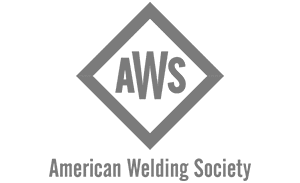National Welding Month- The History of Welding
For our next spurt of blog posts, we’re going to focus on one of mankind’s greatest inventions-welding (welding actually ranked #10 on Scientific American’s list of greatest inventions back in 2013). With April being National Welding month, we’re going to take a few posts this months to talk about the history of welding and then focus more specifically on sanitary welding and welding in the high purity process industry.
The history of welding goes back to the Bronze Age. Man’s first attempts at joining metal were done mostly through a process known as forge welding. It works by heating the metal pieces until they glow red and soften. When they’re soft enough, the welder mashed the two parts together with a hammer and allowed them to cool. This type of metal working was popular up until the Industrial Revolution when new forms of welding were devised to meet industries evolving needs.
While the history of welding is interesting, we’ll spend the rest of this post focusing on the common welding techniques of today and where we see them used.
The easiest place to start is the welding process we’re most familiar with- arc welding. Arc welding is a type of welding that uses a power supply to create an electric arc between an electrode and a base material to melt the metals together at the welding point. There are two main methods of arc welding- consumable and non-consumable electrode methods. An example of consumable welding is gas metal arc welding (GMAW), also known as MIG (metal/inert-gas). This is a semi-automatic or automatic process in which a continuously consumed wired is fed and acts as both the electrode and filler metal. At Holland we use MIG welders to join structural material, like stainless steel skid frames.
The most common type of welding we see in the high purity industry is another form of arc welding that uses a non-consumable electrode and separate filler material to join two parts. Known as gas tungsten arc welding (GTAW) or tungsten/inert-gas (TIG) welding, TIG welding is a manual process that uses an electrode made of tungsten, an inert gas mixture. TIG welding may or may not use separate filler material to affix joints. This process is especially useful for welding thin materials, but because it is a manual process (with the exception of orbital welding, which we’ll touch on later), it requires a significant amount of skill and can only be accomplished at relatively slow speeds, relative to MIG or other welding processes.
As we just mentioned, another method of TIG welding common throughout the biopharmaceutical industry is orbital welding. Orbital welding is an automatic process whereby an arc is rotated mechanically 360 degrees around an unmoving work piece. This technique does not use a filler material. By taking the human out of it, we see consistent, high quality welds that require little operator intervention. Orbital weld beads end up being so smooth and consistent that BPE guidelines don’t even make us polish ID welds. Most of the high purity welds we create for bio pharmaceutical skids and modules are automatic orbital TIG welds
Now that we’ve talked about arc welding, we’ll spend the rest of the post focusing on some processes that are less common in the high purity industry, but pretty cool nonetheless.
The first process we’ll touch on is friction welding. Friction welding uses pressure and movement to generate the heat we need to cause welding to occur. Friction welding is commonly used to join dissimilar materials. This is helpful in aerospace applications where we might want to join a lightweight aluminum part with a high strength steel. Because of the large difference in melting points between aluminum and stainless, arc welding procedures would be useless and a mechanical connection would be required. But friction welding provides a full strength bond with no additional weight.
Next, let’s look as laser welding. We do see laser welding from time to time in the sanitary industry. Laser welding is a process that uses a high power laser beam to provide a concentrated heat source, allowing for narrow, deep welds and high welding rates. Because of its speed, laser welding is commonly used in high volume applications. Laser welding provides high quality welds and the focused beam results in small heat-affected zones, resulting in little distortion of the part.
Finally, we’ll talk about ultrasonic welding. Ultrasonic welding is cool because it is commonly used to join plastics and dissimilar materials. Ultrasonic welding uses high frequency ultrasonic vibrations applied to work pieces held together under pressure to create a weld. We think ultrasonic welding is interesting for its potential uses in affixing single use needle hubs to cannula.
This is by no means a comprehensive list of welding techniques, but a brief overview on a few processes that we see in our industry or just think are cool. We’ll spend the next couple of posts discussing sanitary hand and orbital welds a little more closely. If you have any questions about your sanitary welding application, contact a Holland Sales Engineer today








